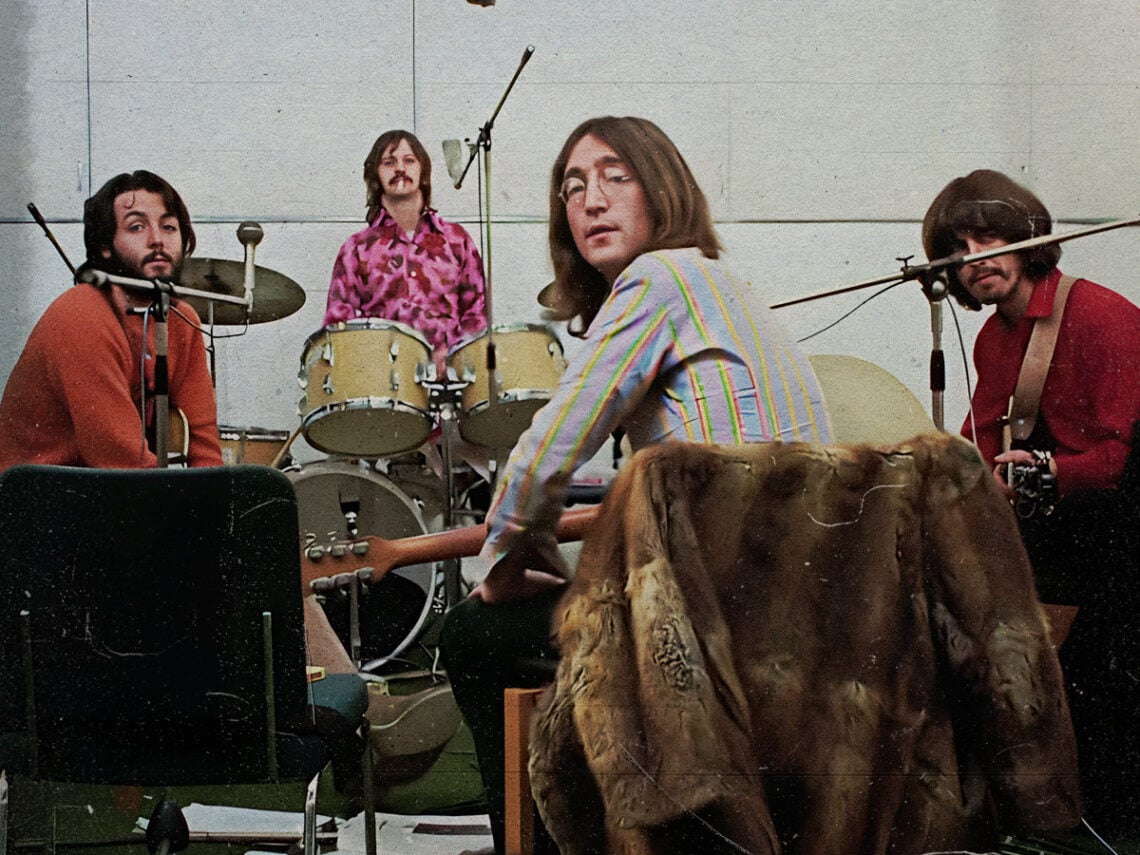After being unavailable for 50 years, Peter Jackson’s restoration of Michael Lindsay-Hogg’s documentary, Let It Be, brings the momentous footage back from its 1970s grave. For fans of The Beatles, this marks a trip back in time. However, as the footage served as the origin for Jackson’s far more extensive eight-hour in-depth release, Get Back, this restoration falls limp at the feet of its successor.
Naturally, for an over-50-year-old piece, Let It Be was never going to be all that revelatory. The stories of the recording sessions of the final Beatles album are infamous, having been rehashed and analysed by fans ever since. It was perhaps the most tumultuous and rocky era in the band’s history as George Harrison quit, their relationships worsened, and all four members seemed desperate to finally be out of their recording deal. In short, the album was the dying days for the group, and everyone around them knew it.
But while that tale is well known, it is still a great one. The Beatles’ fans remain hungry for any and all footage of the band, so in that way, Let It Be more than delivers. It is a well-balanced odyssey of beautiful shots, music-video-like sequences, moments that capture the writing process for some of the band’s best-loved tracks, and candid footage documenting the atmosphere of the studio. However, it’s the energy of the latter that is lacking.
In a pre-premiere recorded interview, Lindsay-Hogg and Jackson discussed the inextricably linked nature of their careers now. Having previously worked with all this footage before for his own project, Jackson was always the obvious choice for the restoration job, giving it the visually stunning finish that was praised on Get Back. Lindsay-Hogg draws an obvious line between the two projects as he declared Let It Be to be the father of Get Back, seeing the two documentaries in a lineage. But the younger heir ends up being vastly more interesting and engaging.
This makes perfect sense. As the original Let It Be was released in 1970, the band were never going to air out all their dirty laundry. The result is that the movie is tight and somewhat impersonal. The boy’s charm and humour do still come through, and the insider look into their writing process is still intimate enough to be interesting, but having now had a wider perspective cast by Get Back, Let It Be simply doesn’t feel enough.
Having had that more vulnerable and in-depth look at the way their relationships were changing, all the arguments and personal dramas, disastrous discussion surrounding now-iconic rooftop shows and more, this latest rehash feels like a flimsy pamphlet stacked next to War and Peace. The most polished, surface-level view of events shown in Let It Be doesn’t scratch the itch for Beatles curios, and now the more interesting footage is already out there.
Nevertheless, Let It Be is an important piece of history in its own right. As the biggest band in the world, there will always be an insatiable desire for Beatles content, even if it is old and has been seen time and time again. Presented here in its originally intended form, Let It Be is, in itself, a piece of the puzzle that goes into the band’s tricky final years.
While there are moments when some tension floats in, especially as Paul McCartney undoubtedly acts as the band leader attempting to pull the group together and keep productivity going, overwhelmingly, the documentary still feels 50 years later like an attempt to keep up appearances; both externally to their fans and internally. Throughout, the group repeatedly get sidetracked by playing some of their old originals or early covers, clearly sentimentally reconnecting with their start to avoid the inevitable end. There’s a sense of putting on a happy face as the dying breath is drawn. This in itself is of interest, but it’s one to passingly muse over rather than marvel at time and time again.
For fans who are content to go into Let It Be not expecting to learn anything but simply happy to have another piece of Beatles footage to enjoy, the documentary is a treat. It’s stunningly restored, musically incredible and packed with clips that really never get old. Witnessing the moment songs like ‘Get Back’ or ‘Dig It’ were born is spectacular. The eternally funny footage of the grouchy policeman barrelling up to the roof still prises a laugh, too. But in the shadow of the 2021 documentary, which used the same footage but with miles more insight and a far deeper look into their same era, the 1970 film has been usurped by its own heir, rendering this restoration rather moot and obfuscated, like an airbrushed highlights package when you’ve already seen the guts and glory of the full game.



